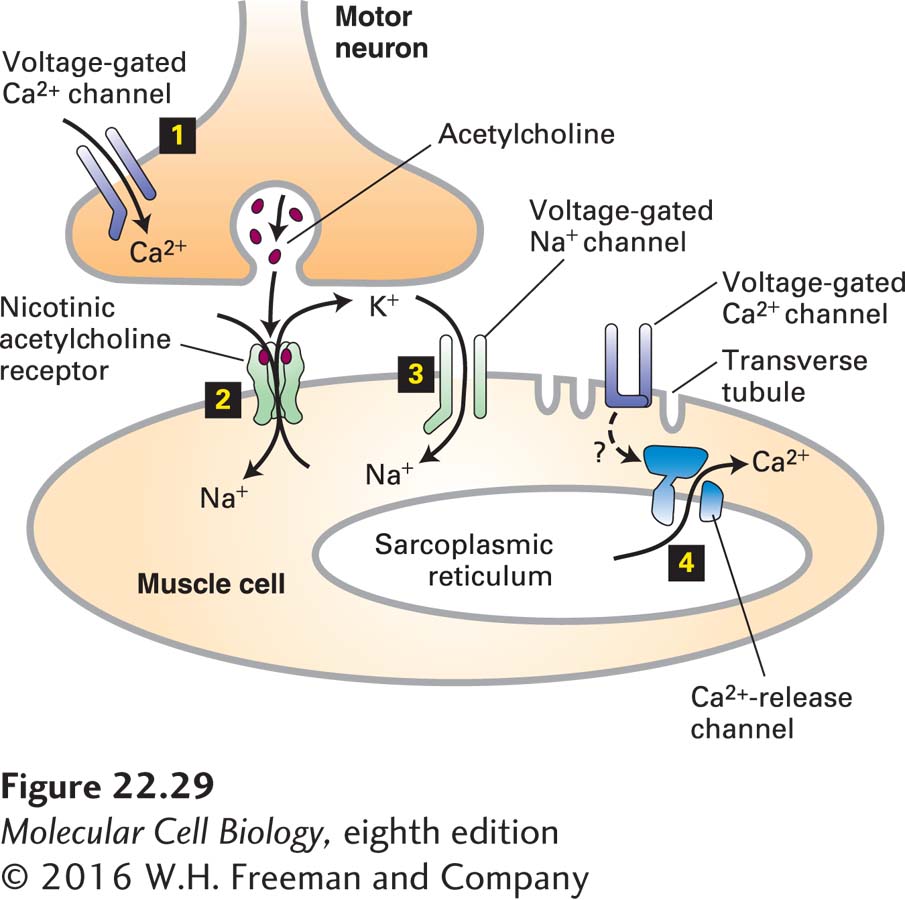
FIGURE 22- 29 Sequential activation of gated ion channels at a neuromuscular junction. Arrival of an action potential at the terminus of a presynaptic motor neuron induces opening of voltage- gated Ca2+ channels in the neuron (step 1) and subsequent release of acetylcholine, which triggers opening of the ligand- gated acetylcholine receptors in the muscle plasma membrane (step 2). The open receptor channel allows an influx of Na+ and an efflux of K+ from the muscle cell. The Na+ influx produces a localized depolarization of the membrane, leading to opening of voltage- gated Na+ channels and generation of an action potential (step 3). When the spreading depolarization reaches transverse tubules, it is sensed by voltage- gated Ca2+ channels in the plasma membrane. Through an unknown mechanism (indicated as ?) these channels remain closed but influence Ca2+ channels in the sarcoplasmic reticulum membrane (a network of membrane- bound compartments in muscle), which release stored Ca2+ into the cytosol (step 4). The resulting rise in cytosolic Ca2+ causes muscle contraction by mechanisms discussed in Chapter 17.
[Leave] [Close]